One Small Patch of Woods Near the University of Maryland Sparks an Epic Fight
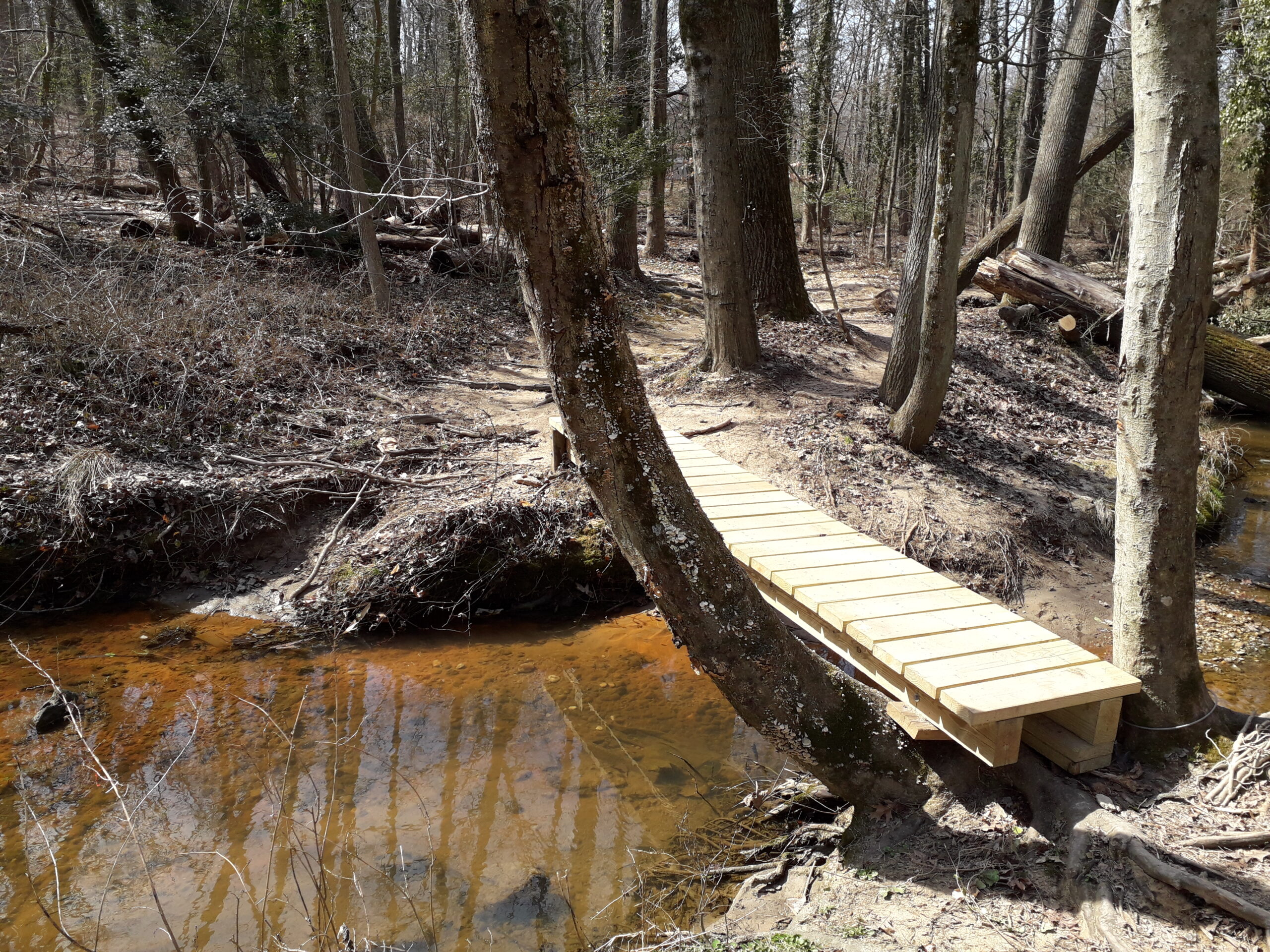
First of a two-part series.
A 10-acre wooded plot tucked behind buildings across from the University of Maryland in College Park is filled with native and non-native trees and plants, the sounds of birds, and the burble of a creek, with two abandoned houses at its perimeter and some scattered trash on the site.
The parcel’s future is at stake – and at the center of a growing fight.
It could hold affordable graduate student housing and market-rate townhouses adjacent to a planned Purple Line station and within walking distance of campus, according to one vision – or be used for teaching students in the university’s environmental sciences and sustainability studies programs, or become a nature preserve, according to others.
Some College Park neighbors and environmentalists have mounted an energetic, late-stage effort to stop the sale of the plot for a development that would build graduate housing and private townhomes on the wooded lot across from campus dubbed “Guilford Woods.” A spokeswoman for the university said Monday that UMD President Darryll J. Pines would meet with project opponents soon.
The “Western Gateway” project to build below-market rate housing for 300 graduate students and 81 market-rate townhouses has been underway for more than four years.
On one point all sides agree: There is a desperate need for affordable graduate school housing in College Park. Currently, UMD has just 750 units of graduate housing for its more than 10,000 graduate students who must otherwise find housing in one of the country’s most expensive real estate markets.
The sale of the land is a critical step that is likely to come before the Maryland Board of Public Works this summer or fall. It will determine the key outcome: to develop the plot or not.
Opponents say the sale price is set at a fraction of the market value, even after accounting for the fact that the buildable land is restricted to about one-third of the total lot sold. The land is currently underused, but there are disagreements about its potential and about environmental concerns due to the loss of trees.
There is also the issue of “smart growth” and competing values: Does the concept of building dense housing close to public transportation and walkable to campus, aimed at preventing environmentally-detrimental sprawl, justify paving over woods? What if that housing is priced affordably and addresses another crucial community need?
Two steps remain in the process: The Maryland Board of Public Works must agree to sell the land, and the project must be submitted to the Prince George’s County Planning Board for its review and approval.
Recently, a group called “Save Guilford Woods” has raised alarms about the proposal to neighbors and members of the university community who were unaware of the project. It created a petition that has attracted more than 1,150 signatures, calling on UMD President Darryll J. Pines to pursue alternative options, withdraw from negotiations with the developer, and protect the land as a nature preserve for public use. The group says more than 70 individual letters of protest have been addressed to Pines and the Maryland Board of Public Works in hopes of halting the project.
“Our advocacy is about site selection,” said Stuart Adams, immediate past president and a board member of the Calvert Hills Citizens Association. “It feels like it’s a done deal, and they’re doing lip service to the public. We’re at the 9th, 10th, 11th hour.”
Adams and others say the process has taken place behind closed doors, without adequate transparency. They say there was no site-selection process, just a response to a developer who approached the university with a proposal.
Gilbane Development Co. officials, who have been discussing the project with the university for four years, say they have done everything requested of them and more.
“Gilbane has held over 25 community meetings and the feedback has led to substantial design changes, including stepped-architecture, reduced number of parking spaces, alterations to the access road, the stormwater management system, and the tree preservation and reforestation program,” said Gilbane Senior Vice President Russ Broderick. “We are committed to continuing to work with the community throughout this process.”
In addition to providing much-needed affordable housing that would be walkable to campus, Gilbane officials say they are proposing a stormwater management system that would leave the site better than they found it, among other benefits.
The project already has gained the support of the College Park City Council and the University System of Maryland Board of Regents, and had three necessary zoning amendments approved by the Prince George’s County Council.
The land is tucked away behind the University of Maryland Hillel and a small church building owned by the Church of Latter Day Saints on Mowatt Lane and University United Methodist Church on Campus Drive. The site contains the headwaters for Guilford Run, which bisects the woods as it flows ultimately into the Anacostia River and Chesapeake Bay.
Neighbors say a path through the site is used as a cut-through by walkers, runners and bird watchers; a small bridge crosses the creek at one point. On Saturday mornings, the Sierra Club leads an informal group of volunteers who remove invasive species, but some members said the wooded site is not well-known or heavily used.
Steve Prince, a UMD professor emeritus of geographical sciences, likened it to the “Wooded Hillock” behind the Xfinity Center, an area of campus that was proposed for development a few years ago, before it was discovered that professors were taking hundreds of students to the woods for classes. Some colleagues in the department are excited about possible similar use of Guilford Woods, he said.
“For environmental scientists, this is our laboratory,” said Prince.
Opponents want to see a study of possible development sites, and have named alternate sites already owned by the university, but proponents say the public-private partnership and the private financing that goes with it are tied to this particular parcel. They say the other sites might be viable for other projects, but not for this one, which can move forward more quickly since it is already several years into the planning stages.
The genesis
More than a decade ago, the land in question was zoned R-10 for dense multifamily housing for a project that was eventually approved, Mosaic at Turtle Creek, which would have put 300 luxury apartments on the site. That 7-story project was never built, but the approval for 300 units remains active through the end of this year, said Prince George’s County Councilmember Dannielle M. Glaros (D), who represents the area around the university.
About four years ago, Gilbane approached the university seeking to buy one acre of land for a private townhouse development on real estate the company acquired abutting the state-owned site. The university responded that townhouses were not a top priority; the priority was graduate housing, said Edward J. Maginnis Jr., UMD Assistant Vice President for Real Estate. Eventually, a public-private partnership was proposed that would build both.
“We’re leveraging their capital to achieve a longstanding university public goal,” Maginnis said.
College Park city officials have had a long-standing goal to attract more affordable student housing, especially graduate housing, said Mayor Patrick Wojahn, who supports the project.
Gilbane, a Rhode Island developer, has built $10.7 billion in college housing and private housing all over the country, and has served over 120 colleges and universities, according to its website. Projects under development in the area include Tempo, 299 market-rate student housing units near UMD’s northern gateway; Atworth, a 451-unit mixed-use development next to the College Park Metro; and the Riverfront at West Hyattsville Metro, which will include retail, apartments, and townhouses.
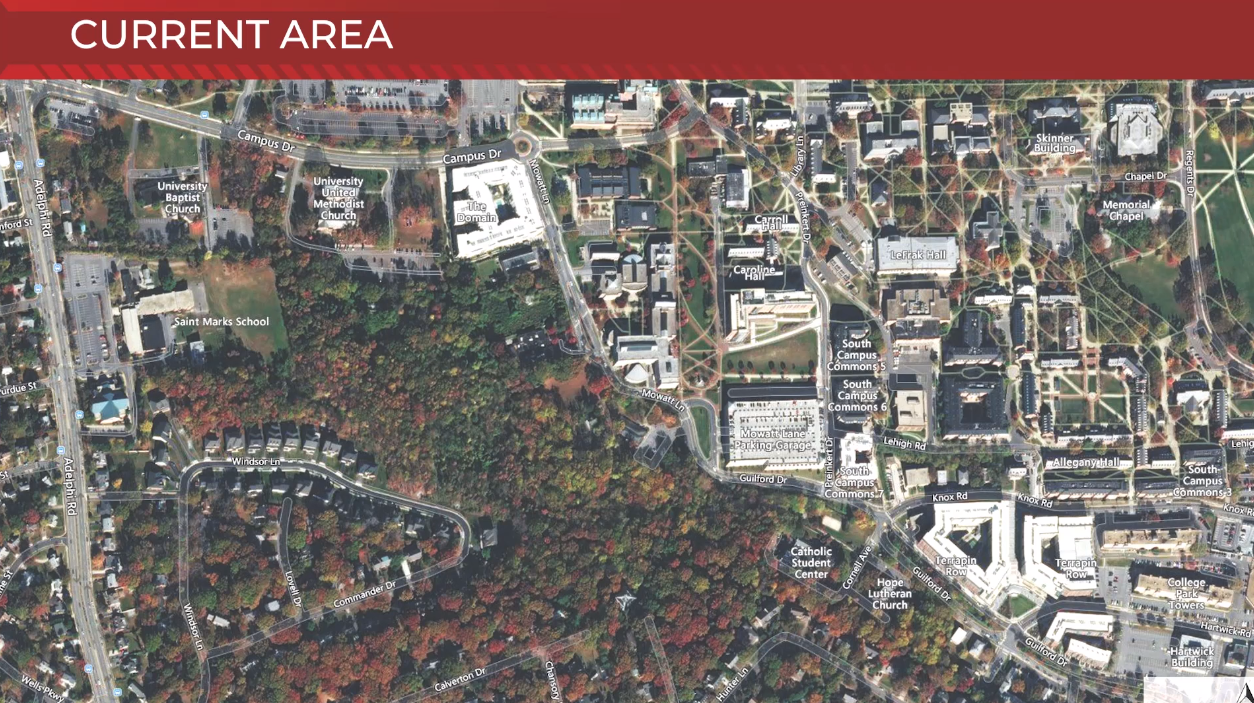
An aerial view of the site. Screen shot from a video put out by the developers.
In March 2019, the University System of Maryland Board of Regents approved the sale of the land. Three zoning amendments were required. The College Park City Council voted to support the zoning in March 2020, and the Prince George’s County Council approved the changes in June 2020. In September, the Board of Regents accepted a technical change that required re-approval of the project.
Also in September, Calvert Woods, the neighborhood downstream from the site, suffered a 100- to 200-year flood that dumped more than 4.5 inches of water in about 2 1/2 hours, flooding an estimated 20-40 homes. It was the third major flood since 2009. Some residents believe UMD’s surface parking lots contribute to the flooding in their neighborhood.
The proposal
Under the proposal approved by the Board of Regents in 2019 and amended in 2020, the state would sell 8.71 acres of land on Mowatt Lane and Campus Drive to Gilbane for $810,000, and lease Gilbane 1.74 acres where the graduate student housing would be built, according to board minutes. Under the 75-year ground lease, with two 10-year optional extensions, the annual rent of $622,500 would be abated in exchange for below-market rate rents for graduate students.
Two appraisals commissioned by Gilbane and the UMD estimated the fair market value of the land, including the parcel that will be leased, at about $8 million, but valued the portion to be sold at only $790,000 or $810,000 respectively, according to the meeting agenda.
Gilbane declined to say how much land it owns contiguous to the real estate it is seeking to buy from the university, but according to a map titled “Parcel Ownership” shown during a public presentation to the Calvert Hills Citizens Association this month, its LLC owns 4.86 acres.
Of the 7.79 acres to be sold to Gilbane, only 1.03 acres can be used to build townhouses, said Maginnis. The other 6.76 acres would be subjected to a permanent “no vertical construction” restriction that would allow construction of only sidewalks, roads, a UMD shuttle bus stop, and other amenities, as well as open spaces and a tree buffer with the neighborhood.
The acreage numbers have changed slightly since a land swap with the Hillel was put on hold, and different parties and documents use slightly different numbers when discussing acreage.
The site is centered between the university’s only two graduate housing developments, Graduate Hills and Graduate Gardens, and is walkable to campus and to the planned Purple Line station, Maginnis said.
The graduate housing would be owned and maintained by Gilbane, meaning the university would not incur expenses for construction or maintenance of the building.
Opponents say they are outraged at the proposed sale of public land for “pennies on the dollar.” They note that Gilbane bought 2 contiguous acres of land on nearby Route 1 in January 2019 for just under $30 million, where they are building Tempo, a 296-unit student community. Advocates say that works out to about $15 million per acre for those lots zoned for mixed use, previously the sites of a Burger King and an abandoned restaurant.
“It’s appalling that our publicly-owned forested land that is supposed to be protected is being sold for 170 times less than land one mile away,” Adams said.
The university’s “no construction easement” is the reason for the low sale price, Maginnis said.
“If you sell somebody land but make them promise to never build anything on it that generates income, the value of the land skews toward zero,” Maginnis said in an interview with Maryland Matters.
Other advocates question why the land is being sold and not leased to Gilbane.
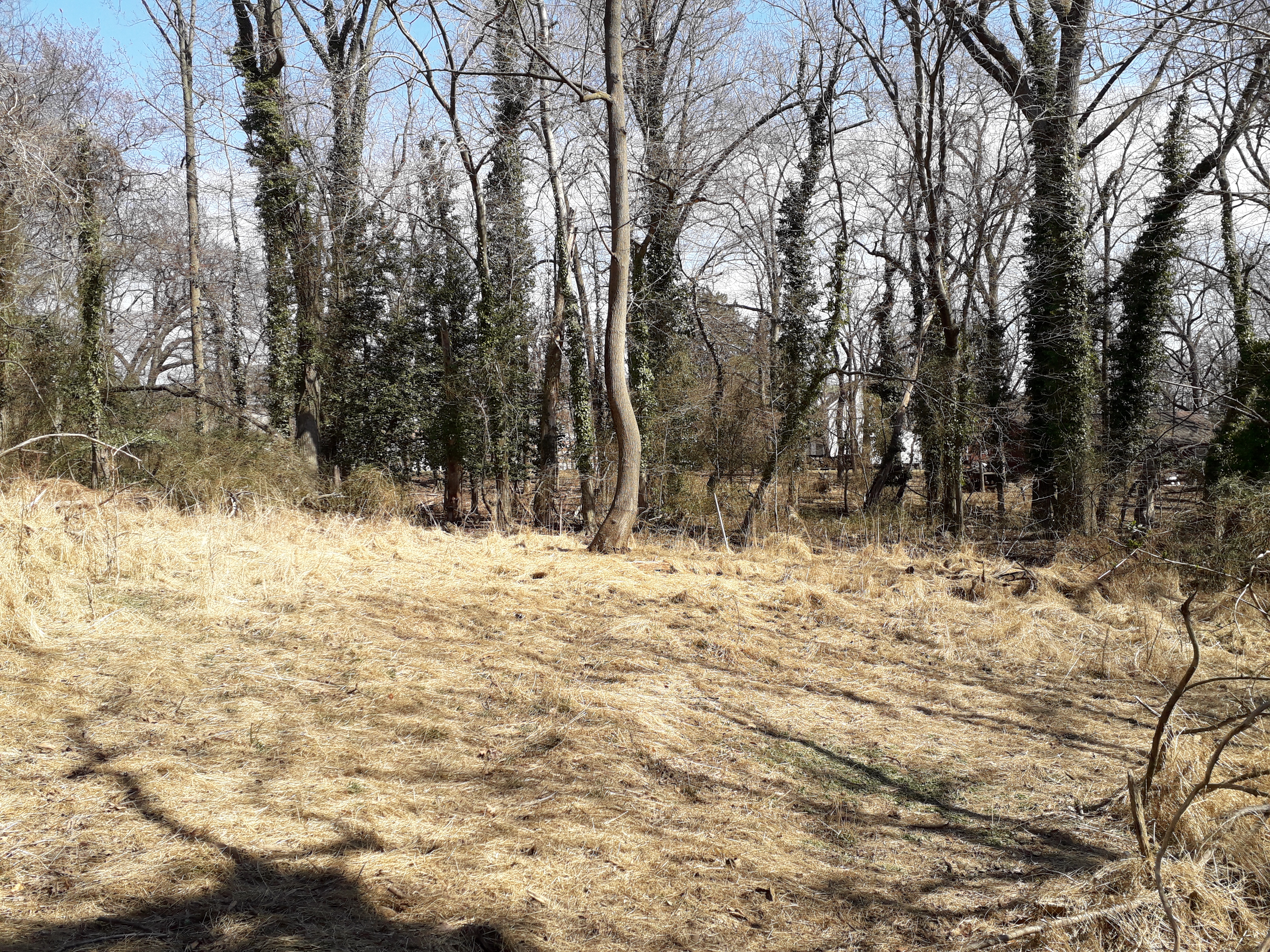
Another view of the woods near the UMD campus. Photo by Lisa Nevans Locke.
The original proposal would have kept more land within the ground-leased portion, meaning more land would have been retained by the state, Maginnis said. But privately-owned land must go through the full Prince George’s County development process and abide by stricter county tree conservation and stormwater management rules than is required of state-owned land. The smaller ground-lease portion will go through a separate “mandatory referral” process for public sector projects by which the Planning Board’s decisions and recommendations are advisory only.
Still others say public wooded land is increasingly rare within the Capital Beltway, and what remains should be preserved.
“Large plots of contiguous forest are dwindling. They’re impossible to replace,” said Josh Tulkin, state director of the Maryland Sierra Club. “We support building graduate housing near the Purple Line, but we have serious concerns about this plan. There are not a lot of places where you have 10 acres of forest. We have a responsibility to generations after us to preserve this.”
Citing “environmental, fiscal, and other concerns,” a petition on the “Save Guilford Woods” website that calls on the university to reject the sale and make the site a nature preserve has gathered the support of numerous community and environmental groups. More than half of the signers are affiliated with the university, and the majority are local residents.
Some signatories say they hope to persuade Pines to re-think the project, which pre-dates his presidency, and which they believe conflicts with the university’s public commitments to sustainability. Pines became president in July 2020, after the Board of Regents initially signed on to the project.
In an email to Maryland Matters this month, university spokesperson Natifia Mullings wrote, “The University is aware of the petition and will continue to respond to emails we have received about the Western Gateway project.“ Pines is now scheduled to meet with project foes soon, Mullings said Monday.
Proponents argue that the project’s “smart growth” credentials – dense housing near public transportation and walkable to campus and jobs – make it in sync with both the university’s and the county’s vision. They say all sides benefit.
“It’s the textbook definition of a public-private partnership,” a Western Gateway project spokesperson said. “Graduate students get below-market housing. The University of Maryland gets graduate housing they don’t have to build. Gilbane gets townhouses.”
At a recent meeting with Calvert Hills residents, Broderick said he hopes to have the project ready by academic year 2023-2024.
Tomorrow: Conflicting priorities and visions
Lisa Nevans Locke is a freelance writer who has covered education, local and federal government, and other issues in the region for more than 25 years. She has written for The Washington Times, Bethesda Magazine, Scholastic.com, The74million.org and the now-extinct Montgomery Journal, and she teaches writing at Montgomery College.
She can be reached at [email protected].
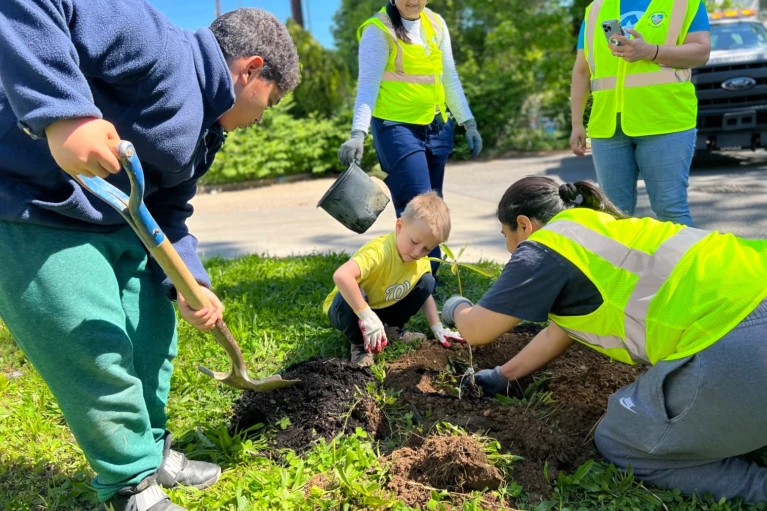

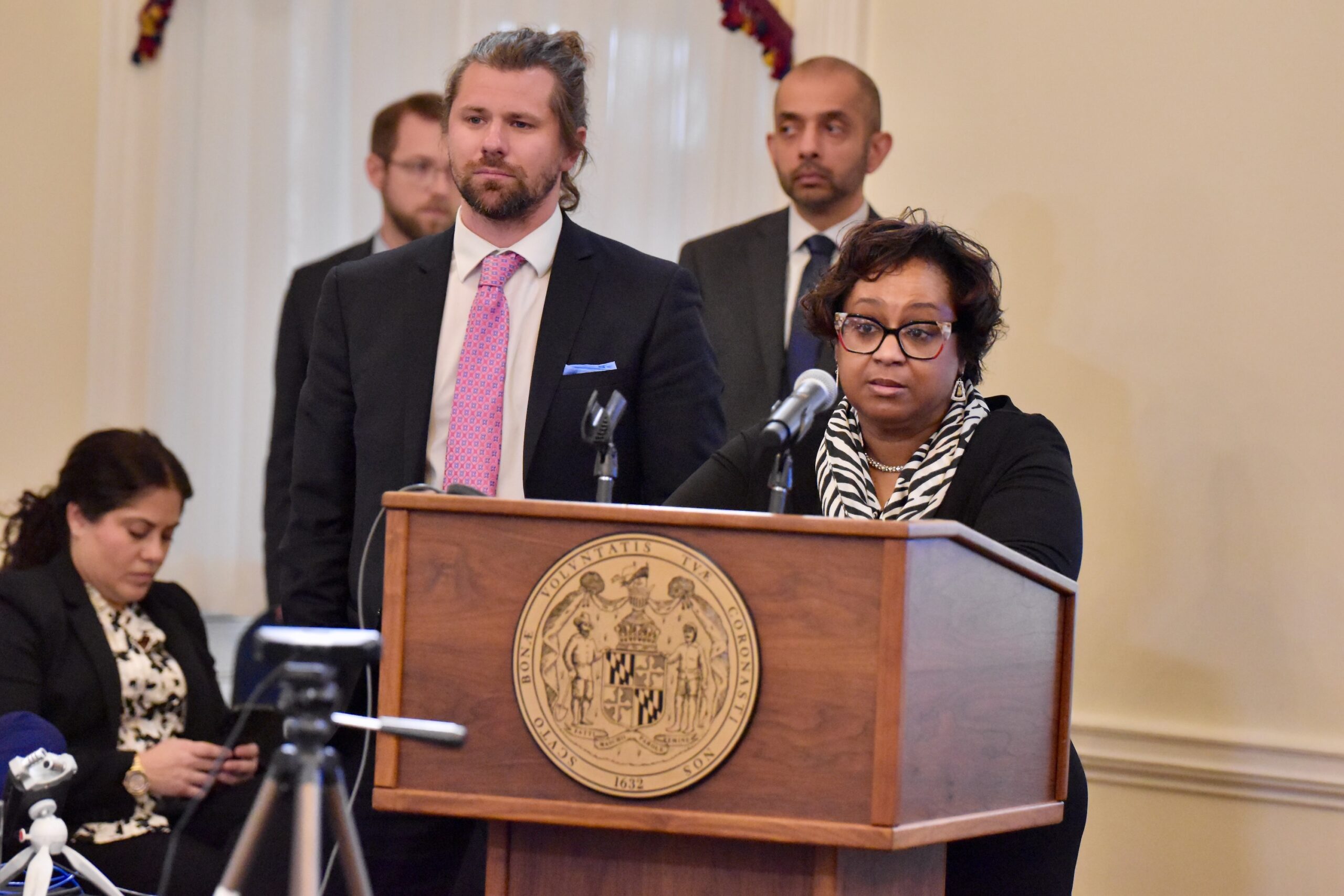
 Creative Commons Attribution
Creative Commons Attribution